-
Posts
2,105 -
Joined
-
Last visited
-
Days Won
11
Content Type
Profiles
Forums
Blogs
Gallery
Events
Store
Posts posted by QSAMIKE
-
-
Hello Simon:.....
The Birk's bar was awarded / given to the next-of-kin of members of the Canadian Army / Navy / Air Force who died during WW2.....
It was sent to the next-of-kin by the Henry Birks' and Sons Co. Ltd. a jeweler with national chain of stores at the expense of the Birk's family as a gift to the families in recognition of their loss....
It was sent on a Birk's Blue card and had the Rank / Name and Date of death engraved.....
Birks at the time would mount the casualties medals free of charge and the bar was sewn across the ribbons.....
The NOK of course also rec'd the memorial cross.....
The bars were very often misplaced or lost or separated from the medals and memorial cross and they are very hard to find that is why it is quite rare to find 2 to brothers.....
Please see:
http://members.shaw....s/memorials.htm
http://www.cmp-cpm.f...ng.asp?ref=MemB
http://www.medalsofw...stpage=whatsnew
Mike
0 -
Good Evening Ladies and Gentlemen:......
Well home again after a good day of Garage Saleing and would thought I would share with you a couple of fantastic items I have found.....
THE BIRKS MEMORIAL BAR:
BOWHAY, SAMUEL LESLIE F/L (PILOT) J4744 - From Three Hills Alberta. Killed Jan 10/45 age 29. #5 O.T.U. Boundary Bay, British Columbia. Liberator aircrafte exploded midair. F/L Bowhay stayed at the controls and maintained control of the aircraft long enough for several of his crew to bail out. He stayed with the aircraft.
BOWHAY, WILLIAM EDWARD P/O (PILOT) J85938 - From Three Hills Alberta. Killed July 23rd 1944 age 24. 418 City of Edmonton Squadron. Mosquito aircraft HR149 crashed at Parkstone, Dorset, England.
OPERATIONS WING.
Mike
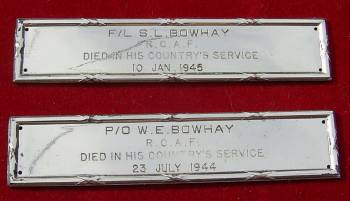
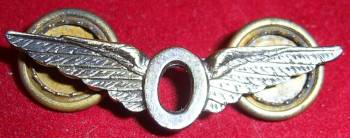 0
0 -
Wonderful painting Mike, thanks for sharing. May I ask where you found such a wonderful piece?
Simon
Good Afternoon Simon......
I purchased it from the estate of a collector here in Calgary..... I purchased a total of 8 Payne watercolours and oils but had to sell 6 of them to recoup the funds so that I could keep the one I really wanted.....
One I donated to a military museum for tax purposes..... LOL
Mike
0 -
-
Second Picture did not show up will try again.......
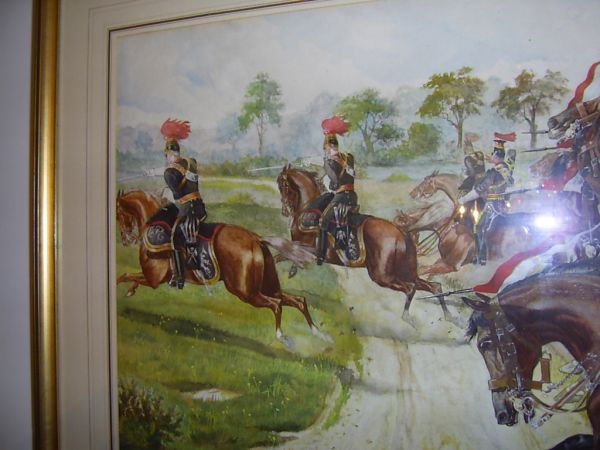 0
0 -
-
Harry Payne Picture.....
 0
0 -
"23rd Fusiliers Privates Firing From a Trench" - Victorian Royal Welsh Fusiliers showing the blue facings of a "Royal Regiment".
The artist was Arthur Payne, brother of Harry Payne.
About 6" tall.
You can't help but compare this with the familiar images of WWI trench warfare.
Good Morning Gentlemen......
I have a quite rare book called entitled "FOR QUEEN AND COUNTRY" The Career of Harry Payne Military Artist 1858-1927 by Michael Cane. It is a limited edition of 400 copies my copy is #55.
In this book it of course explains the career of Hary Payne and also his brother Arthur who did not do much in the military field. But the nice thing in it is a list of all the works that Harry Payne did in his lifetime broken down into, Military Scraps, Early Greeting Cards, his complete Postcard Series, Cigarette Cards, Toys, Books, Prints, Pictures, Sketchbooks and Rural Postcards.
I have a very large original painting of his, 12th Lancers done in 1881 and hope that I can post some decent pictures for your pleasure.....
Mike
0 -
Mike - a very special posting. I knew that a committee had been looking at suggestions but have never seen any pictures. Was this the only one that made it through to a 'mock-up' ? What about the reverse - did they complete both sides ?
I must in all honesty say that I am pleased they kept to traditional format - the 'Sheriff's Star' you show is not very attractive. However, thankyou for the opportunity to view. Mervyn
Good Morning Mervyn.....
The reverse is smooth and not finished...... The star is silver, the "South Africa" ring is bronze and the Queen's head in the center is Gold..... One of the reasons that it was rejected was that it would be to expensive to produce..... I have seen a couple of pictures, drawings, from papers of the time, where a soldier is wearing the medal.....
It had been published in some papers that this was going to be the medal and the people incharge had given them drawings for publication complete with suspension and ribbon colours..... The suspension was very similar to the Kimberly Star.....
Mike
0 -
Here is another picture.......
 0
0 -
Good Morning Gentlemen and Ladies:
I was asked on a previous thread what was the rarest medal in my collection.
Well.........
Attached is a photo of the Proposed Queens South Africa Medal.
The "Proposed Medal for the South African War 1899-1902" is described in the Orders and Medals Publication the Journal and in Journal #15 - 1976, Spring Volume 1 (150), Page 12, and "Proposed Medal for the South African War 1899-1902 Some More Notes" in Journal #46 - 2007, March Volume 1 (274), Page 40. There are some photos with the article.
Since the article was published one more has been found that looks as if it possibly may have been made into a belt buckle.
For those of you who are not OMRS members and may ask to see a copy of the original article I am sorry but it was lost when my computer crashed and I lost a large amount of research information, I know I backed it up on a disk but where that is right now I am not sure.
Mike<BR clear=all>
 0
0 -
Mike - a nice pair. The Canadian Scouts must have been quite small in number ? You will probably find that the sh. flashes ended up on the slouch hats. Many of our local units had them cut out of sheet brass by local jewellers. He must have taken discharge in Sth. Africa to have still been here for the 1906 Bambatha Rebellion - with his previous Scout's service he was just right for the Rangers.
Good Morning Mervyn.....
Total Number of Officers and Men who Served: 1005
Rutter an Australian served in the Canadian Scouts from the 26th of January 1902 to 30th June 1902 with no South African previous service......
I just got a new shipment of the Regimental History of the Canadian Scouts with full medal roll.........
Mike
0 -
Don't have any rare one's phsst. How many dateds do you have now Mike? So modest you are.
cheers
Chris
Now Chris that is like asking a woman her age.......

Mike
0 -
Thats a very nice SH QSA, I also love the 'name badges' do you make these yourself, its a good idea!!
Hi Mike
I have an engraving shop make them.... When they have some scraps they let me know and engrave them for me a $00.05 per letter instead of the usual $00.25 per letter and cost of material which since it is a scrap its free....
Mike
0 -
Hi Mervyn...
Here is a rare one for you......
Cat. No. 1393
RUTTER R. (Richard) S. (Samuel)
REG. NO.: 38388
RANK: TROOPER
REGT: CANADIAN SCOUTS
BARS: CAPE COLONY, ORANGE FREE STATE, TRANSVAAL, SOUTH AFRICA 1902
REMARKS / HISTORY:
1. NATAL REBELLION MEDAL - 1906 CLASP - Private R. S. Rutter, Natal Rangers
2. Quantity Two - Canadian Scouts Shoulder Flashes.
3. Cut Out Letters - "C" "S"
4. South African Constabulary - Edward VII Cap Badge (Small Solid Version)
5. Black and White Photo of Rutter.
Mike
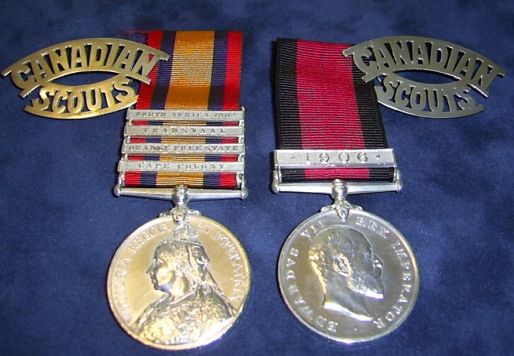 0
0 -
Here you go Mike......
Cat, No. 1216
THOMPSON, A (Andrew)
REG. NO.: 37192
RANK: TROOPER
REGT: SCOTTISH HORSE
BARS: CAPE COLONY, ORANGE FREE STATE, TRANSVAAL, SOUTH AFRICA 1901, SOUTH AFRICA 1902
REMARKS / HISTORY:
1. ROCKET APPARATUS VOLUNTEER MEDAL, KING GEORGE VI, TYPE ONE. NAMED - ANDREW THOMPSON
2. VERIFIED ON ASPLIN ROLL
Mike
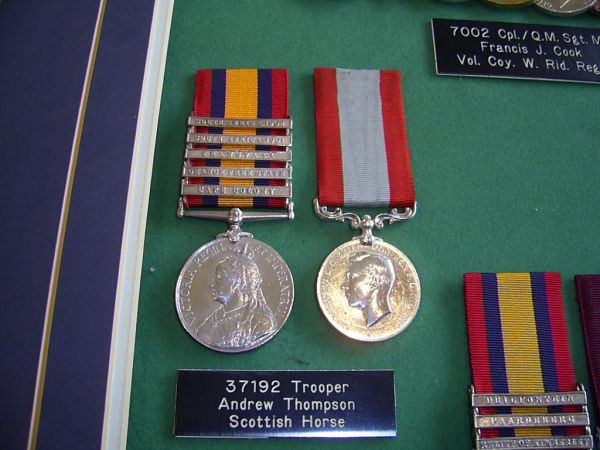 0
0 -
Hello Mike -
Fantastic group, and good details. Thank you for showing.
From what you describe he performed most of his duties, particularly the surveying, under very difficult circumstances and conditions. Aspects that might be difficult to understand given today's advancements in that field.
regards
Thomas
Hi Thomas
I understand but cannot confirm that the wound he rec'd in WW1, he lost part of his jaw and then was entitled to wear a beard to cover the scars.....
Mike
0 -
Very impressive, Mike. Some close-ups of a few rarer ones would be good ?
Hi Mervyn.....
No real rare ones there other than the DCM.....
Mike
0 -
GANDY, H. G. (Henry George)
REG. NO.: N/A
RANK: LIEUTENANT
REGT: ROYAL ENGINEERS - TELEGRAPH BATTALION
BARS: CAPE COLONY, ORANGE FREE STATE, TRANSVAAL, SOUTH AFRICA 1901, SOUTH AFRICA 1902
REMARKS / HISTORY:
1. DISTINGUISHED SERVICE ORDER, GEORGE V. - CAPTAIN H.G. GANDY, ROYAL ENGINEERS
2. OFFICER OF THE ORDER OF THE BRITISH EMPIRE, FIRST TYPE - CAPTAIN H.G. GANDY, ROYAL ENGINEERS
3. AFRICA GENERAL SERVICE MEDAL BAR: SOMOLILAND 1902-1904, JIDBALLI - LIEUTENANT H.G. GANDY, ROYAL ENGINEERS
4. 1914 STAR WITH BAR - CAPTAIN H.G. GANDY, ROYAL ENGINEERS
5. 1914 - 1918 WAR MEDAL -
6. INTERALLIED VICTORY MEDAL - MAJOR H.G. GANDY, ROYAL ENGINEERS
7. TURKISH ORDER OF THE MEJIDIE, 4th CLASS
Turkish Mejidie Order (Mecidi Nishani) - Established in 1852 by Sultan Abdulmejid I, this order became the quintessential decoration of the Ottoman Empire. The order came in five classes, with the highest class limited to 50 members, and the lowest class limited to 6,000. This limitation did not apply to foreign recipients, however, and many examples were awarded to foreign diplomats, heads of state, and British, French, and German military personnel. The badge is a seven-pointed star in silver, with a gold central medallion, around which is a red enameled band bearing four plaques with the words "Zeal, Devotion, Loyalty" and the year AH 1268 (1852) on the bottom plaque. Between each ray of the star are small crescents and stars. The badges of the order are suspended from a red enameled crescent and star device. The ribbon is bright red with narrow green stripes inset from each edge.
8. LONDON GAZETTE 27922 - PROMOTED TO ACTING CAPTAIN 08-06-06
9. LONDON GAZETTE 27924 - 22-06-06 - POSTED 1st NEWCASTLE ON TYNE ROYAL ENGINEERS TO BE ADJUTANT.
10. LONDON GAZETTE 28122 - PROMOTED TO CAPTAIN.
11. LONDON GAZETTE 29001 - MENTIONED IN DESPATCHES - December 9th, 1914 - SIR JOHN FRENCH
12. LONDON GAZETTE 29200 - MENTIONED IN DESPATCHES - June 18th 1915 - SIR JOHN FRENCH
13. LONDON GAZETTE 29320 - PROMOTED TO MAJOR - October 8th, 1915
14. LONDON GAZETTE 29480 - PROMOTED TEMPORARY COLONEL AND APPOINTED BRIGADE MAJOR AND SECRETARY SCHOOL OF MILITARY ENGINEERING
15. LONDON GAZETTE 30730 - AWARDED OFFICER OF THE ORDER OF THE BRITISH EMPIRE (MILITARY) -
16. NOTE: H. S. GANDY ON Q.S.A.
17. VERIFIED P.R.O. WO-157/104 - 161/9
18. Q.S.A. ISSUED July 11th, 1906
19. SEE NOTED ON MAIN FILE
COLONEL HENRY GEORGE GANDY, DSO, OBE, R.E.
27 NOV 1879: BORN AT BARNDALE HOUSE, ALNWICK, NORTHUMBERLAND, SON OF CAPTAIN CHARLES GANDY, 1ST KING'S DRAGOON GUARDS, AND MRS. DOROTHY JANE GANDY (11).
EDUCATED AT SEABANK SCHOOL, ALNMOUTH, AND SEDBERGH SCHOOL, YORKSHIRE, AND AT THE ROYAL MILITARY ACADEMY, WOOLWICH.
14 MAR 1899: COMMISSIONED 2ND LIEUTENANT, ROYAL ENGINEERS.
25 JULY 1901: PROMOTED LIEUTENANT
1901 - 1902: SERVICE IN THE SOUTH AFRICAN WAR. AWARDED THE QUEEN'S SOUTH AFRICA MEDAL WITH CLASPS [CAPE COLONY] [ORANGE FREE STATE][TRANSVAAL][sOUTH AFRICA 1901][sOUTH AFRICA 1902].
1902 - 1904: SERVICE IN AFRICA. AWARDED THE AFRICA GENERAL SERVICE MEDAL WITH CLASPS [sOMALILAND 1902-04] [JIDBALLI]. SERVED IN THE THIRD AND FOURTH EXPEDITIONS AGAINST THE MAD MULLAH IN EAST AFRICA (ABYSSINIA AND SOMALILAND) WITH THE TELEGRAPH DETACHMENT, ROYAL ENGINEERS.
08 JUN 1906: APPOINTED ADJUTANT, ROYAL ENGINEER VOLUNTEERS.
14 MAR 1908: PROMOTED CAPTAIN.
01 APR 1908: TITLED CHANGED TO ADJUTANT, ROYAL ENGINEERS TERRITORIAL FORCE.
1908: FIRED IN THE CLASS I COMPETITION OF THE ROYAL ENGINEERS RIFLE ASSOCIATION. TOOK 4TH PLACE WITH A SCORE OF 91/100. WAS ASSIGNED AT THE TIME TO THE NORTHUMBRIAN DIVISION ROYAL ENGINEERS.
13 JAN 1909: VACATED POST OF ADJUTANT, ROYAL ENGINEER TERRITORIAL FORCE.
21 JAN 1909: EMPLOYED WITH THE EGYPTIAN ARMY.
24 JAN 1909: APPOINTED ASSISTANT DIRECTOR OF TELEGRAPHS IN THE SUDAN. GANDY HELD THE POST FOR LESS THAN TWO YEARS. HE WAS INVALIDED ON OCTOBER 23RD, 1912, AND NEVER RETURNED TO THE SUDAN. DURING HIS BRIEF TOUR OF DUTY HE WAS OCCUPIED CHIEFLY IN SURVEYING UNDER MOST TRYING CONDITIONS IN UNHEALTHY AREAS.
1910: IN THE SPRING OF 1910 HE RECONNOITRED UP THE SOBAT RIVER FOR A LINE TO CONNECT TAUFIKIA WITH NASIR, CLOSE TO THE ABYSSINIAN BORDER.
1912: IN THE BEGINNING OF 1912 HE SURVEYED UP THE PESTILENTIAL BAHR EL GHAZAL FROM TONGA TO MESHRA ER REQ TO DETERMINE THE FEASIBILITY OF CONNECTING TAUIFIKIA BY TELEGRAPH WITH MESHRA. THIS PROJECT WAS ABANDONED, HOWEVER, WHEN HE REPORTED THAT 40 MILES OF CABLE WOULD BE NEEDED FOR THE LINE.
HE WAS REMEMBERED IN THE SUDAN, NOT ONLY AS AN ENGINEER, BUT AS AN ARTIST WHOSE SKETCHES AND CARICATURES GAVE PLEASURE TO MANY.
21 FEB 1913: VACATED THE POST OF ASSISTANT DIRECTOR OF TELEGRAPHS.
28 MAR 1913: LONDON GAZETTE ANNOUNCEMENT OF THE AWARD OF THE ORDER OF THE MEDJIDIEH, 4TH CLASS.
1914: TO FRANCE AND FLANDERS WITH THE OLD CONTEMPTIBLES.
SEP 1914: MENTIONED IN THE DESPATCHES OF FIELD MARSHAL SIR JOHN FRENCH (1). SLIGHTLY WOUNDED AND INVALIDED TO ENGLAND.
25 NOV 1914: JOINED THE 107TH FIELD COMPANY, ROYAL ENGINEERS WITH THE 26TH DIVISION. THE COMPANY WAS FORMED AT ST. MARY'S BARRACKS IN CHATHAM.
JUN 1915: MENTIONED IN DESPATCHES.
23 JUN 1915: LONDON GAZETTE ANNOUNCEMENT OF THE AWARD OF THE DISTINGUISHED SERVICE ORDER. DSO AWARDED FOR WORK WITH THE 2ND CORP R.E. FROM AUG 1914 TO APR 1915.
12 AUG 1915: PROMOTED MAJOR.
01 JAN 1916: APPOINTED BRIGADE MAJOR AND SECRETARY, SCHOOL OF MILITARY ENGINEERING, (S.M.E.), TELEGRAPH AND SIGNALS SECTION, CHATHAM, KENT .
JUN 1918: AWARDED THE O.B.E.. 09 OCT 1918: VACATED POST OF BRIGADE MAJOR AND SECRETARY OF THE S.M.E.
FOR SERVICE IN THE GREAT WAR AWARDED THE 1914 STAR AND BAR, BRITISH WAR MEDAL, AND VICTORY MEDAL WITH MID DEVICE.
23 OCT 1919: APPOINTED ASSISTANT MILITARY ATTACHE TO HIS MAJESTIES EMBASSY IN LISBON, PORTUGAL.
DEC 1920: SERVING IN GIBRALTAR.
22 NOV 1924: PROMOTED LIEUTENANT COLONEL.
JUN 1926: SERVING AS COMMANDER ROYAL ENGINEERS IN CEYLON.
1927: STILL LISTED AS SERVING UNDER THE FOREIGN OFFICE.
SEP 1928: SERVING IN COLOMBO CEYLON. LT. COL. GANDY PLAYED FOR THE "BREWERY BILLIARD CUP". THE CUP WAS PRESENTED BY THE CEYLON BREWERS FOR ANNUAL COMPETITION BETWEEN TEAMS OF FIVE FROM THE SENIOR MESSES IN COLOMBO. GANDY'S TEAM WON 4 OF THE 5 GAMES PLAYED.
22 NOVEMBER 1928: PROMOTED COLONEL - GAZETTE ISSUE 33442 PUBLISHED ON THE 27 NOVEMBER 1928. PAGE 9 OF 124
1929: ADDRESS LISTED AS WESTER HALL, HUMSHAUGH, NORTHUMBERLAND. CLUB: JUNIOR NAVAL AND MILITARY. SERVING AS DEPUTY CHIEF ENGINEER, SOUTHERN COMMAND.
18 MAY 1932: RETIRED PAY. - GAZETTE ISSUE 33827 PUBLISHED ON THE 20 MAY 1932. PAGE 7 OF 74
1938: STILL LIVING AT SAME ADDRESS IN NORTHUMBERLAND.
DIED SOMETIME BETWEEN 1938 AND 1941 AS NO FURTHER RECORD CAN BE FOUND.
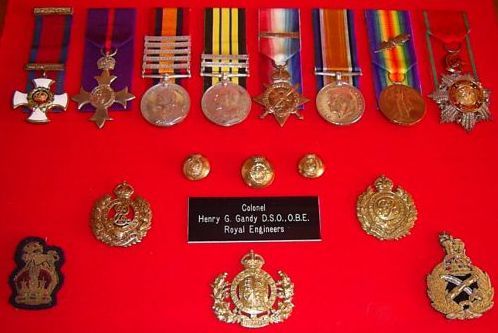 0
0 -
Good Morning Ladies and Gentlemen......
Just a few QSA's for your viewing pleasure.....
Mike
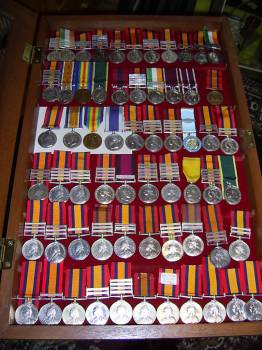 0
0 -
Good Evening Gentlemen......
Here is a Q.E.2 Canadian Memorial Cross issued to a man who died of TB which he contracted while on active service in WW2.....
Mike
 0
0 -
Yes it is from the Boer War period...... It is Figure 1 of Plate (Photo) 18 in the Oosthuizen Guide.....
Mike
0 -
Thankyou for the welcome Brian.......
Mike
0 -
HOVELL, H. De B., (Hugh de Berdt)
REG. NO.: N/A
RANK: MAJOR
REGT: WORCESTERSHIRE REGIMENT
BARS: CAPE COLONY, TRANSVAAL, WITTEBERGEN
REMARKS / HISTORY:1. DISTINGUISHED SERVICE ORDER - VICTORIAN
2. KING'S SOUTH AFRICA MEDAL USUAL TWO BARS
3. CREATED A COMPANION OF THE DISTINGUISHED SERVICE ORDER [LONDON GAZETTE, 27 September 1901]: "HUGH DE BERDT HOVELL, MAJOR, WORCESTERSHIRE REGIMENT. IN RECOGNITION OF SERVICES DURING THE OPERATIONS IN SOUTH AFRICA". THE INSIGNIA WAS SENT TO THE GOC TRANSVAAL 15 November, 1902, AND WERE PRESENTED AT BLOEMFONTEIN 16 March, 1903.
4. COMMANDED - THE 1st BATTALION WORCESTERSHIRE REGIMENT FROM March 1907 to July 1908.
5. COMMANDED - THE 2nd BATTALION WORCESTERSHIRE REGIMENT FROM July 1908 to 1912
6. COMMANDED THE 13th BATTALION WORCESTERSHIRE REGIMENT FROM November 1914 to April 1915.
7. BIOGRAPHY:
Hugh De Berdt Hovell was born in Hackney, London in 1863, third son of Dennis De Berdt Hovell a Surgeon & General Practitioner, of Elstree Holt, Boreham, Hertfordshire, a family of ancient lineage. Hugh Hovell was educated at Winchester College, where he was a student of electricity, and the Royal Military College, Sandhurst, and commissioned in to the Worcestershire Regiment in 1884.
In his Who's Who entry, Hovell claims to have originated the use of telephones on rifle ranges (1886) and the use of field telephones (1888).
In 1892 he was awarded the Royal Humane Society's medal for rescuing, at great personal risk, a private soldier from drowning in a lake at Poona, in India.
During his early years as an officer he studied the welfare and comfort of his men and the best methods of making them efficient soldiers. In 1895, when a captain on leave from India from the 1st Battalion of the Worcestershire Regiment, he disguised himself as a private soldier and served as such with the 2nd Battalion of the Worcestershire Regiment through the New Forest manoeuvres. This was done simply with the object of learning the life, the duties, the difficulties, and the troubles of a soldier on service, so that when in the future he came to command men on active service he should be in a position to know through what his men were going, to appreciate their troubles, to help them through their difficulties, and to make them contented. In this way he felt that he could get the best out of his men, and the country the best value for its money.
He was the author of two manuals, "Soldiers' Shooting" (London: Gale & Polden, 1888) and " Soldiers' Training and Other Notes" (London: Gale & Polden, 1900).
As a Captain he was posted to the 2nd Battalion at Malta in 1896. He took command of "A" Company on the island of Gozo. He was a very strong swimmer and one of his feats was to swim round the island, comparable to swimming the Channel. Every man of his company had to be able to swim a mile, play water polo, march well, be a marksman, do semaphore and know the Morse code, as well as handle a pick and shovel efficiently.
At 5ft. 10ins. he was powerfully built with fine facial features; he had large, piercing eyes and a quiet cultured voice. He was abstemious in his habits—only drank ale and ate only one course, meat and vegetables, at dinner. He always smoked a clay pipe. He wrote a good hand and was expert on the typewriter.
He served with the 2nd Battalion Worcestershire Regiment throughout the South African War of 1899-1902, being mentioned in despatches and awarded an immediate D.S.O. for gallantry.
At the battle of Sligersfontein, 12th February, 1900, he took command and throughout the 24 hours he led the singing to keep the men cheerful. The song was " Oh ! Lucky Jim." During the South African war he had the heavy field glasses issued to companies replaced at his own expense by Zeiss binoculars, and bought for the scouts the Zeiss monocular.
When the South African War closed he was posted home as Second-in-command of the 4th Battalion.
Lieut.-Colonel Hugh De Berdt Hovell commanded the 1st Battalion Worcestershire Regiment at Portobello Barracks, Dublin, Ireland in 1907.
]In 1908 he rejoined the 2nd Battalion to command it at Ahmednagar, India. His first effort was to abolish the physical drill and introduce the Muller system. All ranks joined in heartily and it produced a fine body of men. Next he set about eliminating V.D. He gave weekly talks to all ranks in the gymnasium, and insisted on every man having in his kit a packet of "Before and After." His efforts were rewarded by a clean bill of health.The spine pad was the next thing to be abolished. This cumbersome piece of cloth had been worn for years in India. It weighed several pounds, and he substituted a two ounce strip of coloured linen, which he personally demonstrated and it was taken into use. Each company wore a different coloured strip.
He always encouraged singing on the march as he said it expanded the lungs and kept men fit. He also encouraged reading and wrote several books himself, his best known being " Duffers Drift."
His methods were always "in advance of the times." He first, as a company officer in India, instituted precautions for his men against disease. He started the idea of distinctive marks on his men's coats, so that after a charge and "mix up" the men could be quickly distinguished and re-formation of units carried out without delay. This was adopted generally throughout the Army in France. He trained every man of his company to know and use the semaphore code of signalling and to move noiselessly by night like Indian scouts. He specially trained his officers and men to use their own initiative, and though in 1914 he had long since given up command of his battalion, this training proved valuable at Gheluvelt, when the same battalion, through the individual initiative of officers and men, saved the situation, to the glory of the Worcester Regiment.
He completed his four years in command of the 2nd Battalion in 1912. The C-in-C. India came and inspected the battalion on parade. His remarks were : "I have never in all my soldiering seen a finer and better set-up body of men ; your hospital is closed ; your men are free from venereal disease, and your general efficiency is excellent. That should be good enough for any battalion commander."
No notes about Colonel Hovell would be complete without mention of his bicycle. It was a specially strong machine and only he could ride it. He used it day and night, visiting the cookhouses and the institutes daily. He was nearly always present at the men's teas. He mounted and dismounted by the step and when dismounting from a horse he used to throw his right leg forward and jump off.
Hovell trained 2nd Battalion, according to his own account, 'on Sir John Moore's and Sir Charles Napier's methods of command'. His Who's Who entry attributes the success of the Worcesters' famous charge at Gheluvelt on 31st October 1914 to these training methods!
When First World War broke out in 1914 Hovell was on the retired list, but he soon found himself in command of the 13th (Reserve) Battalion Worcestershire Regiment, formed at Plymouth in November 1914. He also quickly found himself in trouble. His behaviour became the source of rumour among the rank and file, two of whom complained about him. The Times' account of the libel case, on 6th May 1920, reported that:
"Early in December, 1914, rumours were rife that private soldiers were making indecent suggestions about the conduct of the plaintiff, and these rumours continued. A court of inquiry was ordered, and of the two private soldiers who gave evidence one tried to commit suicide."
The President of the Court was Colonel Percy Holland. The conclusion of his report was as follows:
"The Court having most carefully considered the evidence brought before them are of opinion that although they do not consider there is any ground for specific charges such as suggested by the allegations made by Privates Fletcher and Baugh regarding Colonel Hovell, at the same time they are of opinion that Colonel Hovell is undoubtedly eccentric in his manner and methods in dealing with his men, and that these peculiarities of his in conjunction with the treatment rendered necessary to his back are liable to misconstruction."
As a result of the report, Hovell was removed from his command and returned to the retired list. He sought to retrieve his reputation and in 1915, at the age of 52, he enlisting secretly under an assumed name as a private soldier in his old battalion (2nd Battalion Worcestershire Regiment). He served with his 'old comrades' in France for five months until his health broke down.
In May 1920 Hovell's claim that Colonel Percy Holland had libelled him in the report of the inquiry came to trial. Holland's counsel, the Attorney-General, successfully argued that a Court of Inquiry was privileged and that Hovell had suffered no real harm, being stripped neither of his rank, nor his DSO, nor his pension. The judge found for the defendant with costs.
Lieutenant-Colonel Hugh De Berdt Hovell, D.S.O., died from broncho-pneumonia on the 27th November 1923, aged 60.
The Worcestershire Regiment history describes him as a remarkable soldier whose versatile eccentricity has inspired countless legends in the Regiment, he became known as "Mad Jack" . However, he was a gallant soldier and a true patriot.
From the Diary of No.4399 Private Thomas Ford, 2nd Battalion Worcestershire Regiment.
February, 1900
Took part in operations round Colesberg, culminating in the attack on British outposts, Monday, Feb. 12th.
]Casualties – Officers:
Killed.
Lt.-Col. Coningham.
Bt. Major A. K. Stubbs.
Wounded.
Captain B. H. Thomas (died).
Lieut. C. F. Ruxton.
2/Lieut. M. R. Carr.
Casualties - Other ranks:
Killed.
Sgts. Watkins, Carter; Cpl. Pritchard, L/Cpl. Allen, Ptes. Mason, Carrington, McNaughton, Parton, Danks, Pinner, Parker, Lammas, Weissner, Morris, Deverill, Turley.
Wounded.
28 (1 died of wounds); missing and prisoners, 19 (2 died of wounds).
The following notes are from Mr. A. Bradish who served with the battalion in the South African War. His Company Commander was Captain C. M. Edwards.
12th February 1900
The action of Sligersfontein, named after the farm there, was our first engagement exactly one month after landing in South Africa. This successful engagement with the Boers brought the first honours to the battalion—two D.S.O.'s, immediate awards to Captain H. de B. Hovell, O.C. "A" Coy., and Lieutenant H. V. Bartholomew, O.C. "E" Coy.
Three companies bore the weight of the attack, "A," "E," "C." "A" and "E" held the Kopjes, with "C" in support. Lieut.-Colonel Conningham went from the H.Q. Camp immediately he heard the Boer attack was in force. He was leading the supporting company, commanded by Captain Thomas, " C " Coy. Both fell very early, the Colonel killed and Captain Thomas severely wounded, afterwards died. The Colonel had been in command of the battalion only two months. Major Stubbs, O.C. "E" Coy., was killed and Lieutenant Bartholomew took command of the company. Captain Hovell immediately assumed command of the three companies, and the position was held against great odds without one yard of ground being yielded. Severe casualties were inflicted on the Boers. This outpost line, of which Sligersfontein was the extreme right flank, was 20 miles in length and held by four battalions of infantry, the 12th Brigade commanded by General Clements.
On 13th February the whole brigade retired to Rensburg and then on to Arundel, closely followed by the Boer General, De La Ray, and his commandoes, a distance of 30 miles. At Arundel reinforcements arrived and the Boers were halted.
On the 12th February 1900, the right flank of the British at Slingersfontein came under a strong attacked by the Boers commanded by General De la Rey's. The key of the British position at this point was a kopje held by three companies of the 2nd Worcester Regiment. Upon this the Boers made a fierce onslaught, but were as fiercely repelled. They came up in the dark between the set of moon and rise of sun, as they had done at the great assault of Ladysmith, and the first dim light saw them in the advanced sangars. The Boer generals do not favour night attacks, but they are exceedingly fond of using darkness for taking up a good position and pushing onwards as soon as it is possible to see. This is what they did upon this occasion, and the first intimation which the outposts had of their presence was the rush of feet and loom of figures in the cold misty light of dawn
The occupants of the sangars were killed to a man, and the assailants rushed onwards. As the sun topped the line of the veldt half the kopje was in their possession. Shouting and firing, they pressed onwards. But the Worcester men were steady old soldiers, and the battalion contained no less than four hundred and fifty marksmen in its ranks. Of these the companies upon the hill (later named Worcester Hill) had their due proportion, and their fire was so accurate that the Boers found themselves unable to advance any further. Through the long day a desperate duel was maintained between the two lines of riflemen.
The Worcestershire Commander Lieut.-Colonel Charles Cuningham and his second in command Brevet- Major Arthur Kennedy Stubbs were killed while endeavouring to recover the ground which had been lost. Hovell and Bartholomew continued to encourage their men, and the British fire became so deadly that that of the Boers was dominated. Under the direction of Hacket Pain, who commanded the nearest post, guns of J Battery were brought out into the open and shelled the portion of the kopje which was held by the Boers. The latter were reinforced, but could make no advance against the accurate rifle fire with which they were met. The Bisley champion of the battalion, with a bullet through his thigh, expended a hundred rounds before sinking from loss of blood. It was an excellent defence, and a pleasing exception to those too frequent cases where an isolated force has lost heart in face of a numerous and persistent foe. With the coming of darkness the Boers withdrew with a loss of over two hundred killed and wounded. Orders had come from General Clements that the whole right wing should be drawn in, and in obedience to them the remains of the victorious companies were called in by Hacket Pain, who moved his force by night in the direction of Rensburg. The British loss in the action was twenty-eight killed and nearly a hundred wounded or missing, most of which was incurred when the sangars were rushed in the early morning.
Captain Hugh de Berdt Hovell, 2nd Battalion.
On the 21st September 1892, Private H. Hibbert of the Lancashire Fusiliers and another soldier were in a boat on a lake at Poona, India, when it sank in 8 feet 10 inches of water. Captain Hovell was driving past, saw what had happened, partially stripped and, at great personal risk, swam out sixty yards. He managed to rescue Hibbert, but the other man was drowned.
Award: Bronze Medal (Case number 26212)
Captain Hovell was commissioned into the 2nd Battalion in 1884 and was a totally dedicated regimental officer. He was awarded the DSO in the Boer War and commanded the 1st Battalion from 1907-08, then the 2nd Battalion from 1908-11, when he retired.
When First World War broke out in 1914, Hovell was on the retired list, but he soon found himself in command of the 13th (Reserve) Battalion Worcestershire Regiment, formed at Plymouth in November 1914. However, he was found to be eccentric in his manner and methods in dealing with his men and was removed from command to the retired list.During 1915 he sought to retrieve his reputation and enlisted as a private soldier, aged 52, under an assumed name and served with the 2nd Battalion in the trenches till his health gave way. He died in 1923, aged 60.
His RHS Bronze Medal is in the Regimental Museum. In the adjacent photo he is seen wearing the medal ribbon above the right breast pocket.
13th Battalion Worcestershire Regiment - Formed in Plymouth in November 1914 as a Reserve Battalion of the Fifth " New Army".
In November 1914 more "New Army" units were raised, one of which was the 13th Battalions of the Regiment command by Lieut.- Colonel H. de B. Hovell D.S.O., with Captain W. G. Robathan as Adjutant. In April 1915 Colonel Hovell was succeeded by Colonel F. M. Reid. The 13th Battalions originally formed part of the Fifth " New Army". However, before the formation of the new battalion had reached the final stages of its preparations, it was decided to convert it into training units with other new battalions (one of which was the 12th Battalion Worcestershire), to supply reinforcements to replace the anticipated casualties in the preceding Divisions of the" New Armies." So the 13th Worcestershire never went overseas, but instead sent abroad the soldiers they had trained in drafts to the other Battalions.
Mike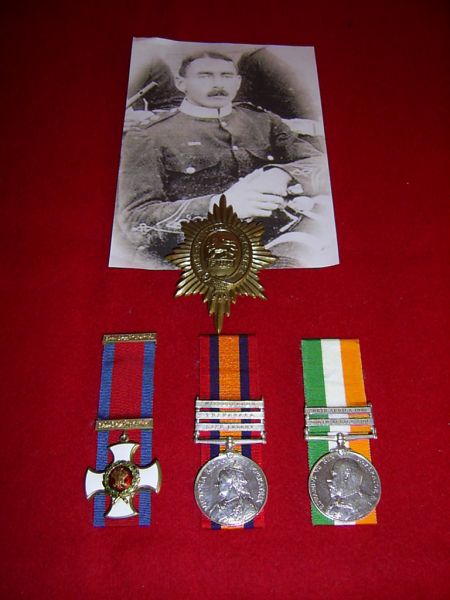 0
0




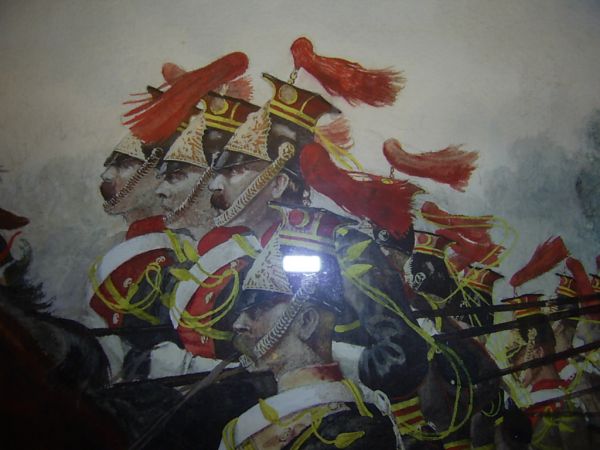
Canadian Flag - opinions as to age
in Great Britain: Militaria: Badges, Uniforms & Equipment
Posted
Gentlemen......
In 1957 the Maple Leaf at the bottom of the crest was changed from Green to Red until 1965.....
Source - GOC website.....
Mike